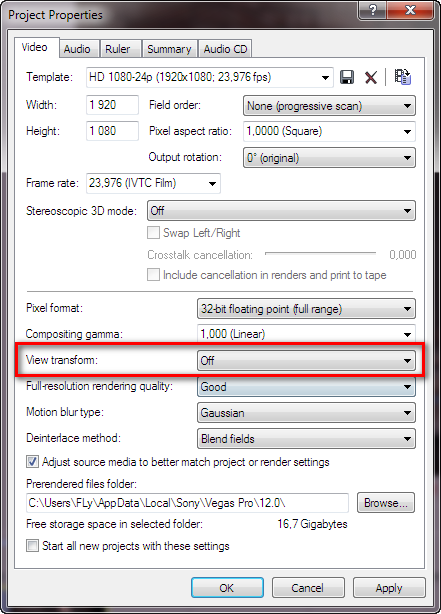Pixel Format Sony Vegas
I am very new to video editing so this could be very obvious but I have no idea why this is happening. If I start a 1920x1080 project and add a video with a resolution of 1440x1080 to the project, Sony Vegas seems to stretch the width of the video to match the project width of 1920 instead of adding black bars to the sides. Best bit/data rate setting for rendering 1080p/60fps Sony Vegas Pro? 5 mbps 720p60 for animation (1080p if needed). For gameplay I'd make a few presets 1 for pixel indie games at like 5 mbps 1 for low graphic 3d games at 10 mbps and one at 30 mbps for high detail AAA games. They transcode ALL content regardless of format or bitrate.
I ran into that problem with both Vegas 7 and 9. I was unfortunately unable to come across an solution, but I do have several workarounds to the problem that I use now.If you're still really wanting to use Divx for your uploads I recommend downloading 'Super' video encoder. You can get it here: Then, when rendering videos in Sony Vegas, I would just render them in Uncompressed AVI (warning this results in massive file sizes but you can delete the large file after converting). Then open Super and convert the video to Divx.

This will let you convert them to Divx and have the audio as MP3. I rendered in this way for about a year.Your other alternative, and this doesn't have nearly as many steps, is to select.MP4 as your video rendering format and render the video out in h.264. I think this tutorial on YouTube should help you out with that:I have been using h.264 for a while now and I can get great looking 1080p video with a relatively small filesize.Hope that helps, let me know if you have any other questions.Matt.
Im am not sure what pixel format i should use for my tv cause i can change the setting on my graphics cards.this is selection it gives me:1.YCbCr4:4:4 Pixel Format2.YCbCr4:2:2 Pixel Format3.RGB 4:4:4 Pixel format studio (limited RGB)4.RGB 4:4:4 Pixel format PC standard (FULL RGB)the first 2 are the most blurry for some reason but the bottom 2 look exactly same which one should i pick.and what setting should i have on in AMD VISON engine control centre.ATI Radeon HD 5870Sony 32' inch Full HD. Im am not sure what pixel format i should use for my tv cause i can change the setting on my graphics cards.this is selection it gives me:1.YCbCr4:4:4 Pixel Format2.YCbCr4:2:2 Pixel Format3.RGB 4:4:4 Pixel format studio (limited RGB)4.RGB 4:4:4 Pixel format PC standard (FULL RGB)the first 2 are the most blurry for some reason but the bottom 2 look exactly same which one should i pick.and what setting should i have on in AMD VISON engine control centre.ATI Radeon HD 5870Sony 32' inch Full HDYCC is a method of encoding RGB into a more efficient format. It takes the RGB signal and separates the high frequency components from the low frequency components.

The high frequency components are sampled at a high bitrate (according to the Nyquist theorem) while the low frequency components are sampled at a lower bitrate. This removes a lot of the redundant data from an RGB signal.The equations to convert the colour space do involve some approximation and rounding, which can result in a loss of sharpness which is what you're seeing. For videos and pictures this is not necessarily a bad thing, but for precision work it can be.EDIT: As far as I know, limited RGB does not use the values at the extreme ends of each colour channel's possible values. Most TVs have a large pixel pitch and low contrast ratio. On LCDs this means that dark colours often look washed out and kinda lame, the same thing happens with bright colours. Solange a seat at the table m4a itunes download.

Pixel Format Sony Vegas Download
Due to the way LCDs process colours they actually interpolate 24 bit colours into 18 bit colours. They often take 8 bits and compress them into 6. Plasma displays do not have the contrast and colour issues and can often display the full range of colours. Limited RGB prevents the renderer from outputting colours that the TV might not be able to accurately reproduce and from creating a contrast that might cause distortion due to interpolation. Full RGB allows all colours within the 24 bit colour space.